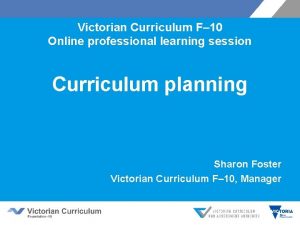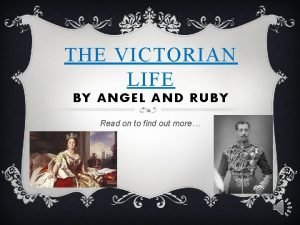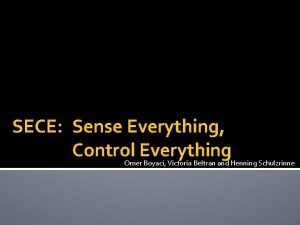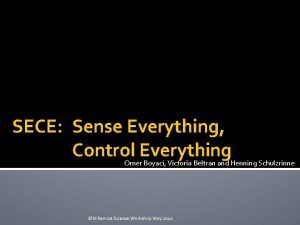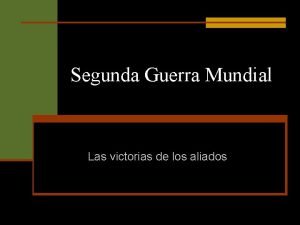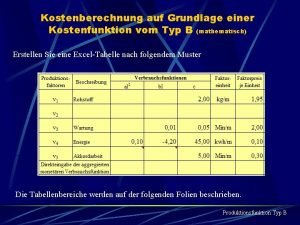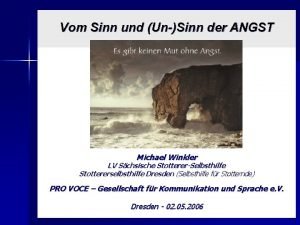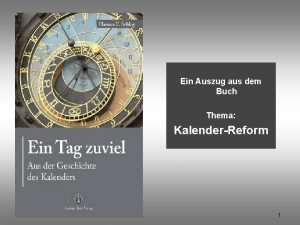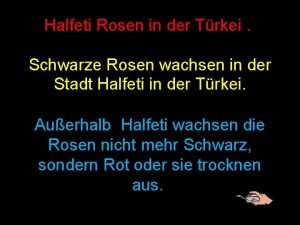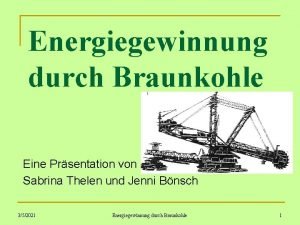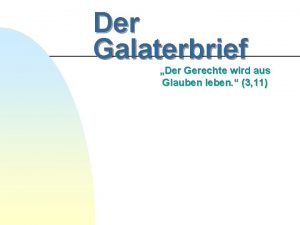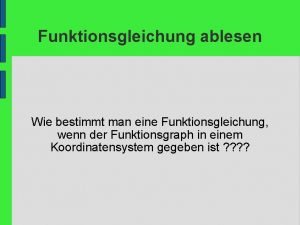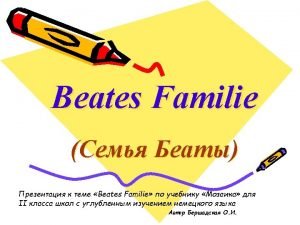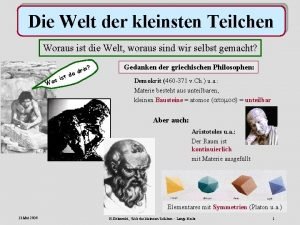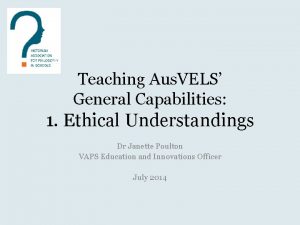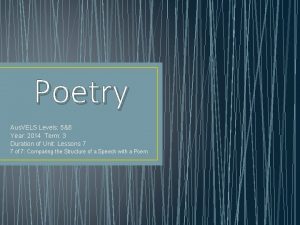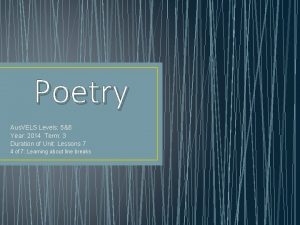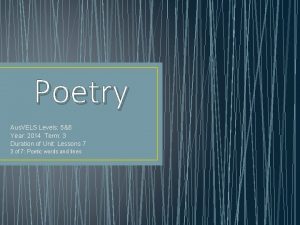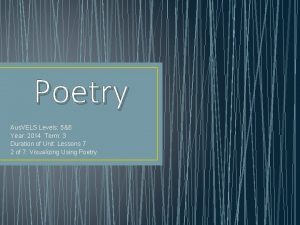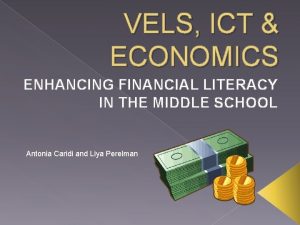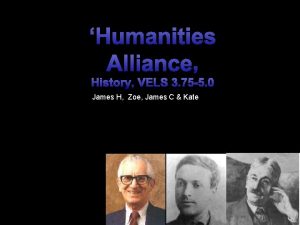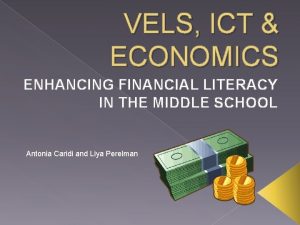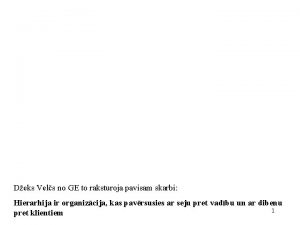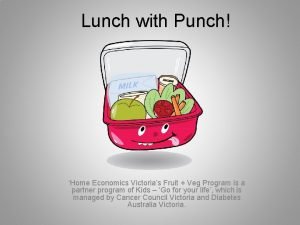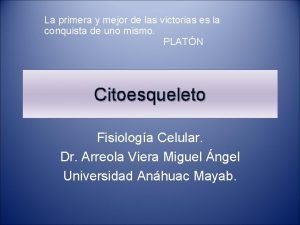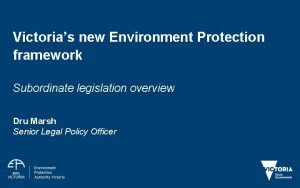Languages in Aus VELS Victorias approach to Languages


























- Slides: 26

Languages in Aus. VELS: Victoria’s approach to Languages in the Australian Curriculum AFMLTA National Conference 2013 Saturday 6 July 2013 Presenter: Maree Dellora

Languages in the Victorian curriculum “You cannot say you have mastered a new language if you have not discovered a brand new world, and your new self in it, through the experience of learning it. " Associate Professor Ariel Heryanto Indonesian Studies, ANU 2

What is Aus. VELS? Aus. VELS is the F -10 curriculum that all Victorian government and Catholic schools use for planning, assessment and reporting. Aus. VELS is available to all Independent schools as a model for the effective implementation of the Australian Curriculum (AC) 3

Aus. VELS - Australian Curriculum and VELS • is a framework that incorporates the Australian Curriculum as it is progressively developed (Languages curriculum is not yet ready for implementation) • aims to ensure that teachers do not have to manage two different curriculum frameworks during the development of the AC 4

From VELS to Aus. VELS to the AC Aus. VELS 2015 VELS - introduced 2006 A double helix model A triple helix model Physical, Personal & Social Learning Discipline-based Learning Domains/subjects General Capabilities Cross-curriculum priorities Interdisciplinary Learning 5

In 2013… In 2013 Aus. VELS curriculum is comprised of: Ø four Australian Curriculum subjects (MESH) Ø the remaining 12 VELS domains Ø three embedded cross curriculum priorities 6

Australian Curriculum LEARNING AREAS/ SUBJECT DISCIPLINES • English (2013) • Mathematics (2013) • Science (2013) • Health and Physical Education (2015) • Languages (2015) • Humanities and Social Sciences [History (2013), Geography (2015) Civics and Citizenship (2015) , Business and Economics (2015) ] • The Arts (2015) • Technologies (inc ICT) (2015) GENERAL CAPABILITIES CROSS-CURRICULUM PRIORITIES • Critical and creative thinking • Aboriginal and Torres Strait • Personal and social Islander histories and capability cultures • Intercultural understanding • Asia and Australia’s • Ethical behaviour engagement with Asia • Literacy • Sustainability • Numeracy • ICT capability (Reflected in subjects) 7

Cross curriculum priorities Three priorities: • Aboriginal and Torres Strait Islander histories and cultures • Asia and Australia’s engagement with Asia • Sustainability About the cross curriculum priorities: • embedded in domains, but with varying presence • not treated as separate areas of learning • no curriculum content located, rather illustrate how learning can be integrated across the domains 8

Learning areas still in development: Geography Languages The Arts Health and Physical Education Technologies: inc. ICT and Design and Technology Humanities and Social Sciences: Economics, Business and Civics and Citizenship 9

General capabilities o Literacy o Numeracy o ICT o Personal and social capability o Critical and creative thinking o Intercultural understanding o Ethical understanding General capabilities underpin flexible and critical thinking, a capacity to work with others and an ability to move across subject disciplines to develop new expertise.

11

Developing Languages in the Australian curriculum Stage 1 Languages Aboriginal Languages and Torres Strait Islander Languages, Chinese and Italian Stage 2 Languages Arabic, French, German, Indonesian, Japanese, Korean, Modern Greek, Spanish and Vietnamese Stage 3 Languages Auslan, Classical Languages, Hindi and Turkish 12

Languages in Aus. VELS 6 categories of Languages and standards 2 Dimensions: - Communicating in a Language other than English - Intercultural Knowledge and Language Awareness 6 Levels (two-year bands) converted into 11 Recommended time allocation: 150 mins per week Languages in Australian Curriculum Language-specific curriculum documents 2 Strands: Communicating Understanding (Originally a third: Reciprocating) 7 General Capabilities (inc Intercultural Understanding) 3 Cross curriculum priorities 11 levels Indicative time allocation: 350 hours over F - 6 160 hours over Years 7 - 8 160 hours over Years 9 -10 Two Pathways: Students begin in Primary Three Pathways: Students beginning at Year 7 Second language learners – 8 languages Background language learners – Arabic, Chinese and Vietnamese First language learners – Chinese 13

STRUCTURE OF THE AUSTRALIAN CURRICULUM: LANGUAGES Communicating strand Structural comparison AC and Aus. VELS 6 sub - strands: • Socialising and taking action • Obtaining and using information • Responding to and expressing imaginative experience • Moving between/translating • Expressing and performing identity • Reflecting on intercultural language use Understanding strand 4 sub - strands: • Systems of language • Variability in language use • Language awareness • Role of language and culture Content descriptions have been written for each of these ten sub strands

Aus. VELS is based on 11 levels Nominal school level VELS Level Prep/Foundation 1 2 3 4 5 6 7 8 9 10 http: //ausvels. vcaa. vic. edu. au/ Aus. VELS Level 1 2 3 4 5 6 Foundation 1 2 3 4 5 6 7 8 9 10

How Languages are organised in the AC Australian Curriculum Levels for Nominal school level Prep/Foundation 1 2 VELS Aus. VELS Level 1 Foundation 1 1 2 2 3 3 4 Level 1 Achievement Standards for Languages 4 5 5 6 Level 2 Achievement Standards for Languages 6 7 7 8 Level 3 Achievement Standards for Languages 8 9 9 10 Level 4 Achievement Standards for Languages 10 2 3 4 3 5 6 4 7 8 5 http: //ausvels. vcaa. vic. edu. au/ 9 10 6 Languages

ACARA consultations on Languages in the Australian curriculum Stage 1 Languages Stage 2 Languages Stage 3 Languages Consultation on curriculum documents for these two was open until 12 April 2013: Chinese and Italian Consultation on curriculum documents for these ten is being conducted from May – July 2013: Aboriginal Languages and Torres Strait Islander Languages, Arabic, French, German, Indonesian, Japanese, Korean, Modern Greek, Spanish and Vietnamese Consultation period yet to be decided Auslan, Classical Languages, Hindi and Turkish 17

Languages in the Australian curriculum Innovative aspects of Australian Curriculum for Victorian teachers: • language specific approach • focus on concepts and processes • huge number of valuable teaching ideas in the elaborations • intercultural understanding has greater focus and also cross curricular • ethical understanding has more status • 3 cross curriculum priorities 18

Languages in the Australian curriculum Possible issues: • time allocation • role of English • status of general capabilities • organising strands and sub-strands • smaller candidature languages • languages at senior secondary level 19

Intercultural Understanding in the Australian curriculum Intercultural understanding assumes an integral connection between language and culture, acknowledging language as the primary means through which people establish and exchange shared meaning and ways of seeing the world (Scarino, Dellitt and Vale 2007). 20

Intercultural Understanding The learning continuum is organised into these three interrelated organising elements: • Recognising culture and developing respect • Interacting and empathising with others • Reflecting on intercultural experiences and taking responsibility 21

Scope of Intercultural Understanding capability “Intercultural understanding combines personal, interpersonal and social knowledge and skills. …. students learn to value and view critically their own cultural perspectives and practices and those of others through their interactions with people, texts and contexts across the curriculum. ” 22

Intercultural Understanding – Values and Dispositions Intercultural Understanding aims to cultivate in students: • • curiosity care empathy reciprocity respect responsibility open-mindedness critical mindedness 23

Intercultural Understanding across the curriculum ………. taught explicitly in the Languages learning area and applied, adapted, strengthened and extended in other learning areas 24

History in the Australian curriculum 25

Contact Details: Victorian Curriculum and Assessment Authority (VCAA) Maree Dellora dellora. maree. r@edumail. vic. gov. au Tel: 9032 1692 26
 Vels progression points
Vels progression points Queen victorias family tree
Queen victorias family tree Omer boyaci
Omer boyaci Omer boyaci
Omer boyaci Las victorias de los aliados
Las victorias de los aliados Multiple conflict
Multiple conflict Deep learning approach and surface learning approach
Deep learning approach and surface learning approach Virtual circuit network
Virtual circuit network Cognitive approach vs behavioral approach
Cognitive approach vs behavioral approach Cognitive approach vs behavioral approach
Cognitive approach vs behavioral approach What is research approach
What is research approach Waterfall and shower strategy
Waterfall and shower strategy Traditional development approach
Traditional development approach Verbrauchsfunktion kostenfunktion
Verbrauchsfunktion kostenfunktion Spruch fließen rechts zur donau hin
Spruch fließen rechts zur donau hin Kochwerte
Kochwerte Ukrainische schrift
Ukrainische schrift Michael j. winkler aus dresden
Michael j. winkler aus dresden Auszug aus dem buch
Auszug aus dem buch Alter bauwagen
Alter bauwagen Schwarze rosen urfa
Schwarze rosen urfa Energiegewinnung braunkohle
Energiegewinnung braunkohle Der gerechte wird aus glauben leben
Der gerechte wird aus glauben leben Ux messen
Ux messen Wie macht man eine funktionsgleichung
Wie macht man eine funktionsgleichung Hallo ich komme aus deutschland
Hallo ich komme aus deutschland Große stärke die man kleinsten teilchen entlockt
Große stärke die man kleinsten teilchen entlockt
